Anyone who has flown with Cathay Pacific will have no doubt heard of the Marco Polo Club. “The Club”, as it’s sometimes referred to, is Cathay Pacific’s frequent flyer program, rewarding high-flyers with elite status. Despite how well-known the Marco Polo Club itself is, people generally tend to have a limited understanding of its inner workings and often have many unanswered questions about the program. Because I’m obsessed with Cathay Pacific and basically have no life, I thought it would be a good idea to dispel some common misconceptions about the program and do a quick “guide for dummies” about the program.
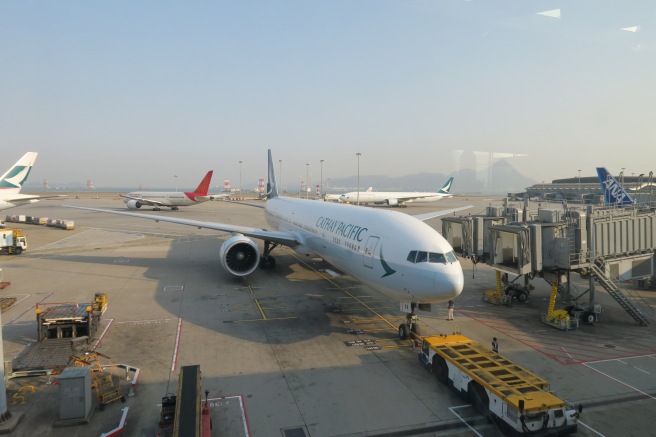 Cathay Pacific Boeing 777-300ER
Cathay Pacific Boeing 777-300ER
The Difference Between Asia Miles and the Marco Polo Club
Contrary to popular belief, the Asia Miles program and the Marco Polo Club are separate loyalty programs. The Asia Miles program allows passengers to earn redeemable miles when flying with Cathay Pacific, Cathay Dragon, oneworld Alliance members and other partner airlines. You can also earn redeemable miles through credit card spend and other restaurant/lifestyle purchases. These miles can be redeemed for flight rewards, upgrades, companion awards or “lifestyle awards”, which include hotel stays and fancy travel accessories. The Asia Miles program is operated by Cathay Pacific and is a transfer partner of a variety of different points currencies, including Citi ThankYou points, Starwood Starpoints and even ParknShop Moneyback points. Asia Miles members do not receive any benefits when flying Cathay Pacific but may redeem Asia Miles for travel extras such as lounge access or extra-legroom seating. Flyers as young as two years old can join, and membership is free.
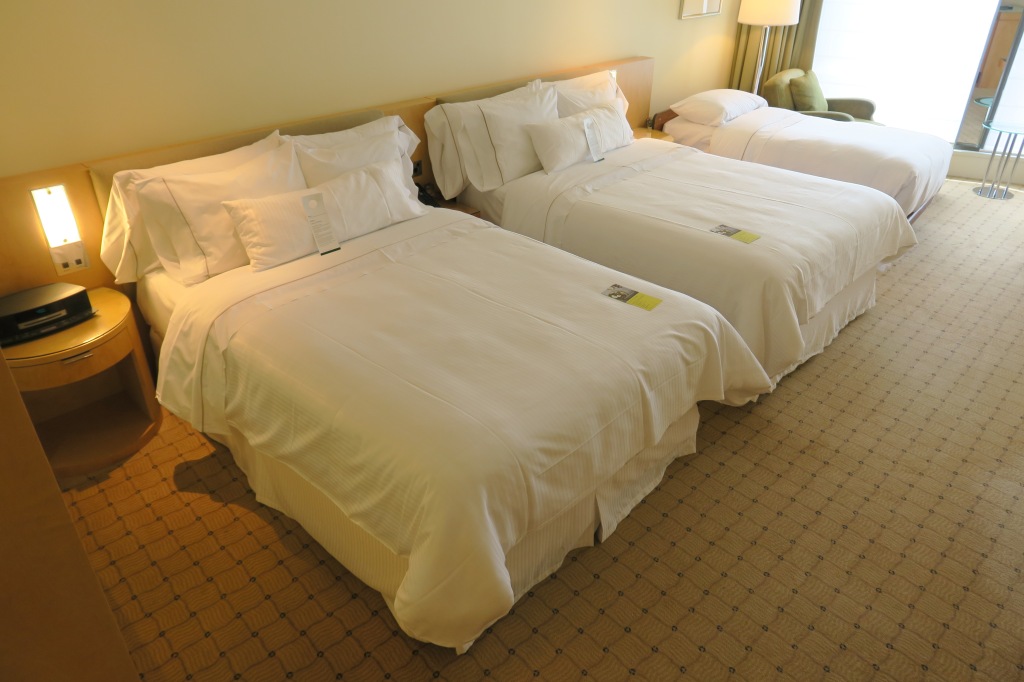 Earn Starpoints at hotels like the Westin Sydney, and convert them to Asia Miles
Earn Starpoints at hotels like the Westin Sydney, and convert them to Asia Miles
On the other hand, the Marco Polo Club is Cathay Pacific’s loyalty program. Passengers can earn Club Points only by travelling with Cathay Pacific, Cathay Dragon and oneworld partner airlines. Club Points are essentially elite qualifying miles and only serve as an indicator of how much one has flown. Marco Polo members receive complimentary elite benefits which vary based on tier. The minimum joining age of the program is 12 years, and there is an initial membership fee of USD100. To retain membership in the program, members must requalify for Green status during a membership year or above or pay a USD100 renewal fee. Marco Polo members are automatically given an Asia Miles program provided that they do not already have an account. If a flyer has an Asia Miles account prior to joining the Marco Polo Club, the existing Asia Miles account will be linked with the new club account.
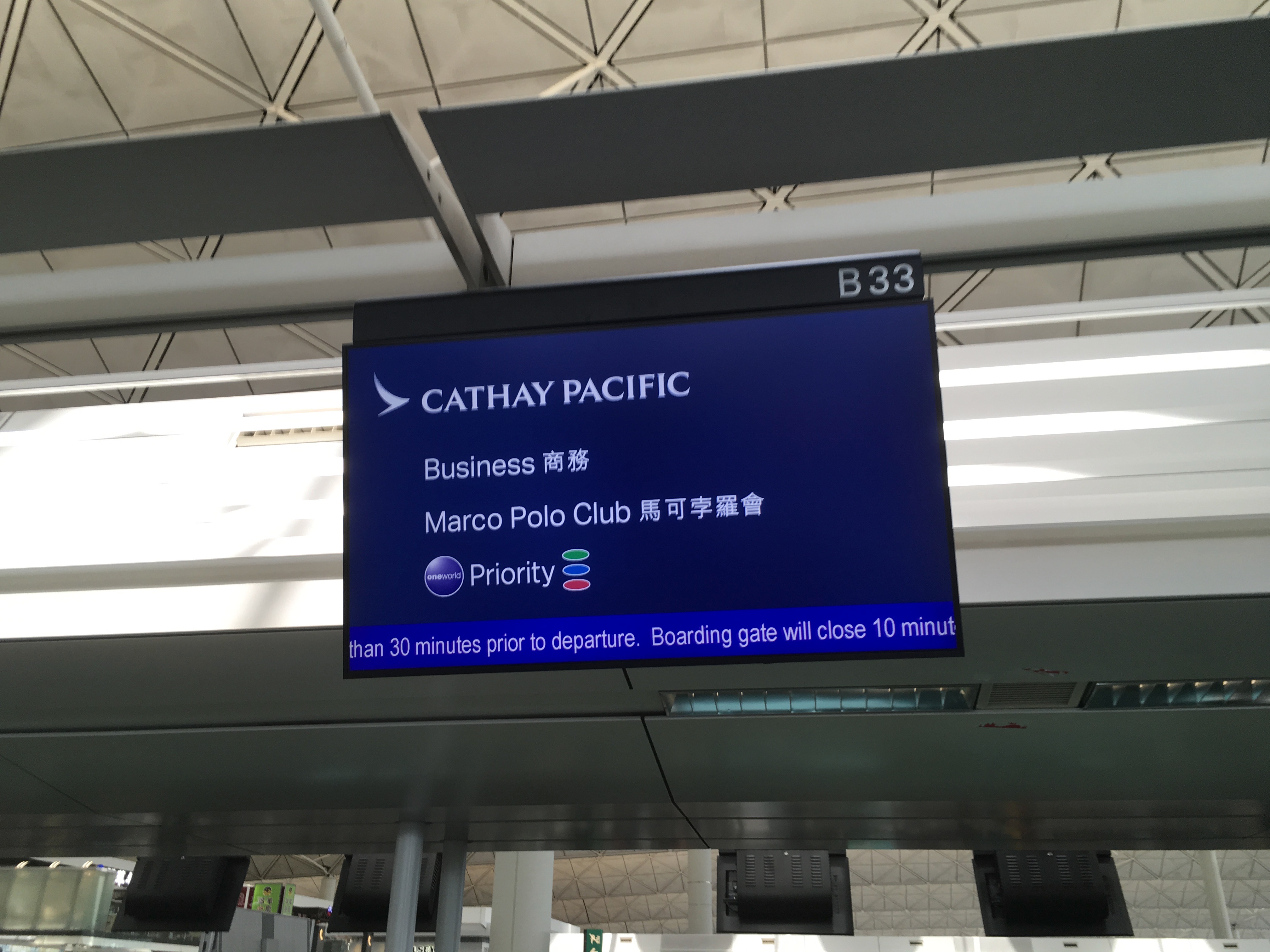 All Cathay Pacific Marco Polo Members receive Business Class check-in
All Cathay Pacific Marco Polo Members receive Business Class check-in
The Tiers
Cathay Pacific has four tiers in the Marco Polo program. Green membership is the program’s entry-level and can be attained by reaching 20 club points during a membership year. If one fails to reach 20 club points, they can pay a fee of 100USD to retain membership in the program, although I’d say it’s probably not worth it to renew the status in that case. Unlike other entry-level tiers, the membership fee and renewal requirement mean that Green status comes with several basic benefits (more on that later). Green is not equivalent to any oneworld status. Silver membership is the lower-mid tier of the program and can be attained by reaching 300 club points during the membership year, and is equivalent to oneworld Ruby status.
Moving on to the higher tiers, Gold membership is the higher-mid tier of the program and can be attained by reaching 600 club points during the membership year. Gold status is equivalent to oneworld Sapphire status. Diamond is the top tier of the program and can be attained by reaching 1200 club points during a membership year. It is equivalent to oneworld Emerald status.
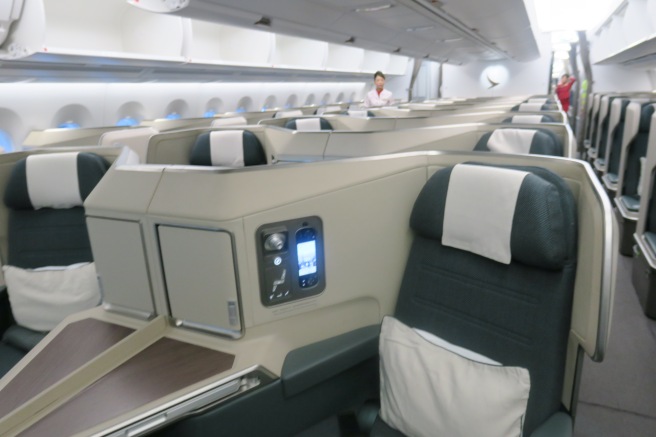 As per usual, higher status usually gets you a better shot at an upgrade into a premium cabin, such as Cathay Pacific’s A350 business class
As per usual, higher status usually gets you a better shot at an upgrade into a premium cabin, such as Cathay Pacific’s A350 business class
There are also two additional “secret” or lesser-known tiers. Diamond Plus is Cathay’s ultra top-tier and is given to the top 1% contributors to Cathay Pacific’s revenue. In addition to all the benefits of Diamond status, passengers are also allowed to nominate one flyer to Diamond status and are apparently also allowed to access Cathay Pacific First Class lounges regardless of the airline they fly. In addition, I imagine that the “soft” benefits and recognition are excellent whenever a member flies with Cathay Pacific. There is also a rumoured tier known as Diamond Invitation, which is Cathay’s lesser well-known ultra-top tier and is typically gifted to VIPs, including celebrities, company executives, and flyers who were gifted Lifetime Diamond status before that program was discontinued in 1999. Members generally aren’t treated any different than other Diamond members. Just think of it as Diamond status you don’t have to work for.
Official Benefits
In this section, I’ll just go over the most notable benefits of each tier. For a full list of benefits, head over to Cathay’s dedicated website about the program.
Green
In addition to the benefits of being an Asia Miles member (so, basically, nothing), passengers can use Cathay Pacific’s Business Class check-in counters and board with Premium Economy passengers. On flights where Premium Economy is not offered, passengers board in a dedicated lane that boards after First and Business Class (which, in reality, tends to be longer than the regular Economy line)
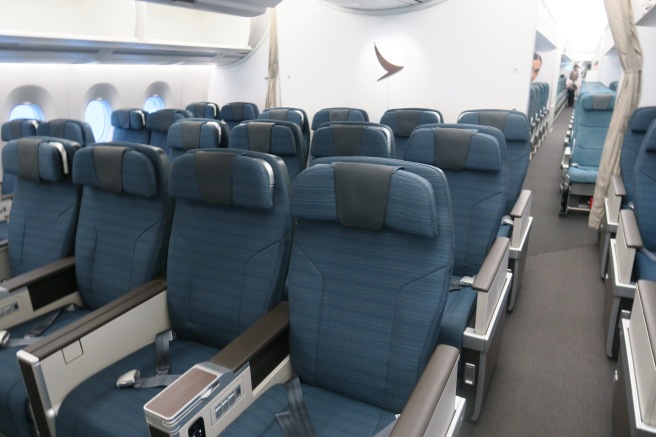 Green members board with Premium Economy passengers
Green members board with Premium Economy passengers
Silver
This is one of the more complicated tiers that comes with some weird and wacky restrictions, so bear with me…
In addition to all the benefits given to Green members, passengers receive complimentary extra-legroom seats, complimentary seat selection in all fare classes (yes, even redemption and supersaver fares), Business Class priority boarding, as well as departure lounge access, which is granted only when travelling on Cathay Pacific and Cathay Dragon operated flights with no guests. Silver members can only use the lounge given by Cathay Pacific and are not entitled to oneworld Business Class lounge access (so for example, no Qantas lounge access in Hong Kong). Occasionally, Silver members may be given access to an inferior lounge (like the American Airlines Admirals Club at JFK instead of the Flagship Lounge). Silver members also receive 10kg of extra checked and hand baggage allowance on all flights, as well as priority baggage handling.
As I mentioned, Silver status is equivalent to oneworld Ruby status, which comes with priority check-in and boarding on oneworld operated flights (although some exceptions apply). What makes Silver status especially unique is that it is the only oneworld Ruby-equivalent program that comes with lounge access, making it extremely valuable for those who travel a decent amount on Cathay Pacific but don’t fly enough to make Gold.
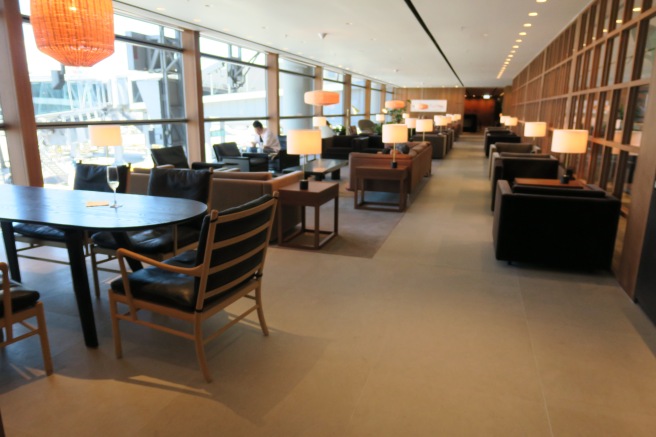 Silver Members receive access to Cathay Pacific Lounges, such as their amazing The Pier lounge at Hong Kong Airport
Silver Members receive access to Cathay Pacific Lounges, such as their amazing The Pier lounge at Hong Kong Airport
Gold
In addition to all the benefits of Silver status, Gold Members are guaranteed an Economy Class in the fare class Y (full-fare Economy) when booking at least 72 hours before departure. In addition, members get 15kg of additional checked baggage allowance or an extra piece of baggage on North American flights. Gold Members are also allowed to bring one guest with them into the lounge when travelling on Cathay Pacific or Cathay Dragon operated flights. Members also receive access to Arrivals facilities in Hong Kong and Frankfurt when flying with Cathay Pacific (with no guests). Gold membership equates to oneworld Sapphire status, which comes with all the benefits of Ruby status in addition to priority security, Business Class lounge access with one guest, extra baggage allowance priority bag handling along with priority boarding when travelling on any oneworld-operated flight.
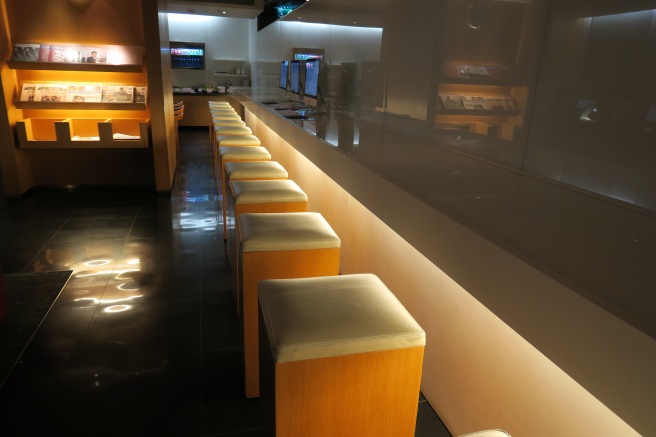 Gold Members are entitled to access to arrivals lounges in Hong Kong and Frankfurt
Gold Members are entitled to access to arrivals lounges in Hong Kong and Frankfurt
Diamond
Diamond is Cathay’s top-tier status. In addition to all the benefits of Gold Status, members are entitled to a guaranteed full-fare Premium Economy (fare class W) and Business (fare class J) seat when booking at least 24 hours before departure, as well as a dedicated call centre hotline. When it comes to the ground experience, members receive First Class check-in and boarding, an additional 20 kg or one extra piece of checked baggage on North American flights as well as 15kg of extra hand baggage allowance. Members also receive access to Cathay Pacific First Class lounges and are entitled to bring two guests into the lounge. Members may also use the American Airlines Arrivals lounge at London Heathrow Airport when arriving on select flights. Diamond status equates to oneworld Emerald status, which comes First Class priority check-in, boarding, lounge access with one guest when travelling on any oneworld-operated flight.
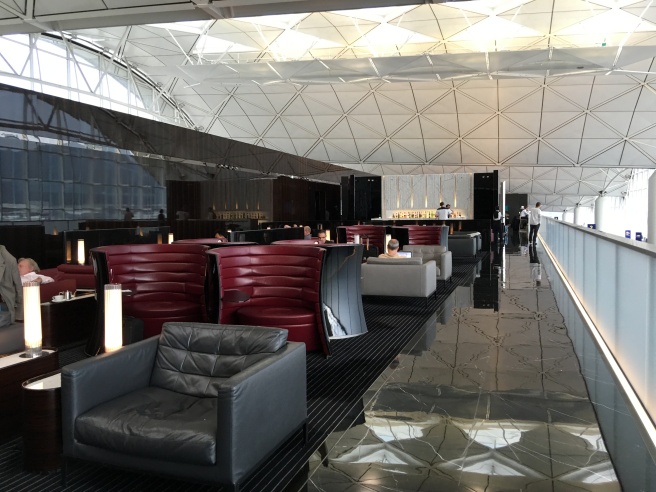 Enjoy First Class lounge access when flying with Cathay Pacific or oneworld airlines
Enjoy First Class lounge access when flying with Cathay Pacific or oneworld airlines
Earning Club Points?
As I mentioned, “club points” essentially act as elite qualifying miles or points. For club point earnings, flights are sorted into seven different distance-based categories: ultrashort (under 750 miles), short (751-2750 miles), medium (2751-3700 miles), medium-long (3701-5000), long (5001-7500) and ultra-long (over 7500 miles). The number of club points you’ll get also depends on your class of travel and whether or not you’ve booked a Save, Core, Standard or Flexible fare for your flight. The club points chart for earnings on Cathay Pacific/Cathay Dragon flights is as follows:
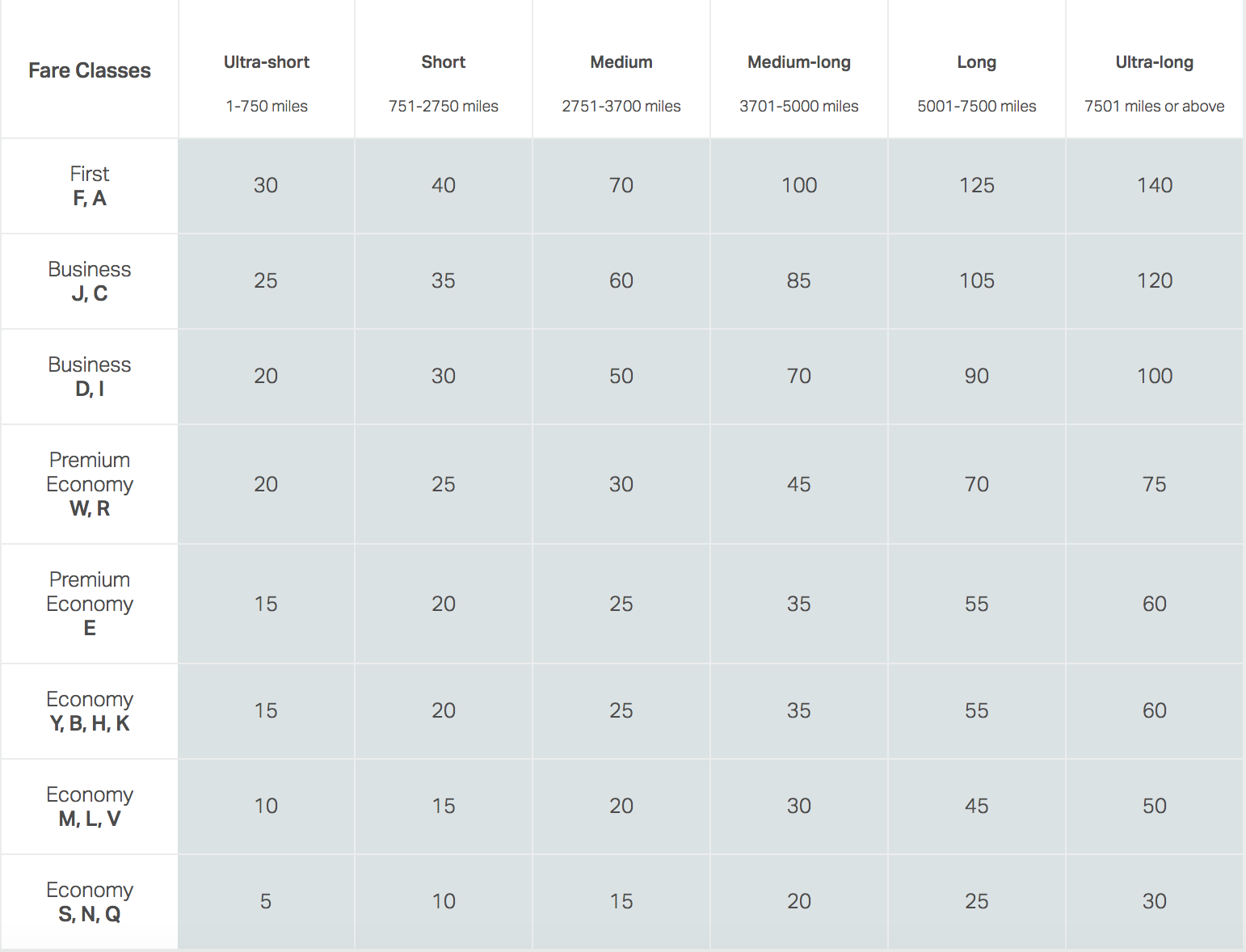
You’ll find a detailed club point earnings chart with charts for all other oneworld airlines here. As is to be expected, flights with Cathay Pacific and Cathay Dragon will generally tend to net you with more club points than you would receive when flying with another oneworld airline.
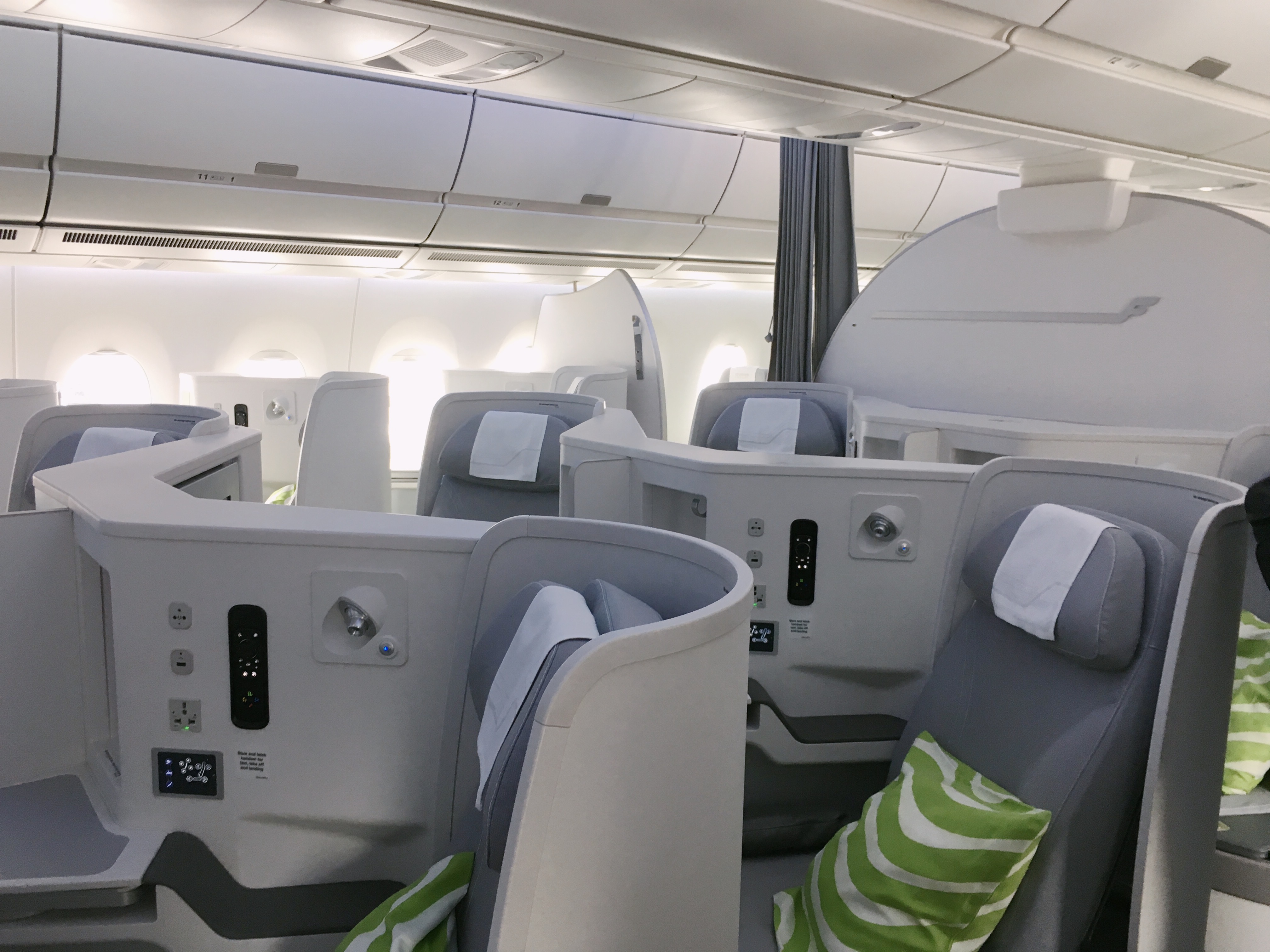 You’ll earn less Club Points when flying with other oneworld airlines such as Finnair
You’ll earn less Club Points when flying with other oneworld airlines such as Finnair
Assuming that each club point represents 100 actual miles flown, it becomes obvious system tends to heavily favour travellers flying in Business and First on all flights, as well as Economy passengers flying on short haul flights. On any given round-trip ticket to Taipei, Business Class Save (fare classes D and I) passengers would be flying around 1,000 miles total, but they earn 40 club points for the entire trip (roughly equivalent to 4,000 elite qualifying miles under the old system). That’s a whopping 400% “bonus”. An Economy Core (fare classes M, L, V) passenger on a round-trip from Hong Kong to Taipei, would earn 20 club points (equivalent to 2,000 elite qualifying miles) for 1,000 miles of flying, representing a 200% “bonus”. Meanwhile, Economy Class and Premium Economy Class on long-haul flights generally tend to lose out when it comes to points earnings under the chart. For a flight to New York City, Premium Economy Standard (fare class E) passengers would be flying around 8,000 miles. However, they only receive 60 club points (roughly equivalent to 6,000 elite qualifying miles under the old system).
It’s no surprise that Cathay would choose to reward those flying in First and Business Class. However, the high earning rates for regional flying may seem odd, especially given how much cheaper these tickets are getting. This appears to be a conscious effort to steer passengers away from regional full-service and low-cost competitors with a more lucrative points-earning scheme. What continues to surprise me is how little club points Cathay rewards for Economy and Premium Economy fares for ultra-long-haul flights, especially considering that these fares tend to run quite high. However, this seems to make more sense after considering that Cathay basically has a monopoly on many long-haul destinations, which means that they can afford to give fewer club points as people will fly them anyways.
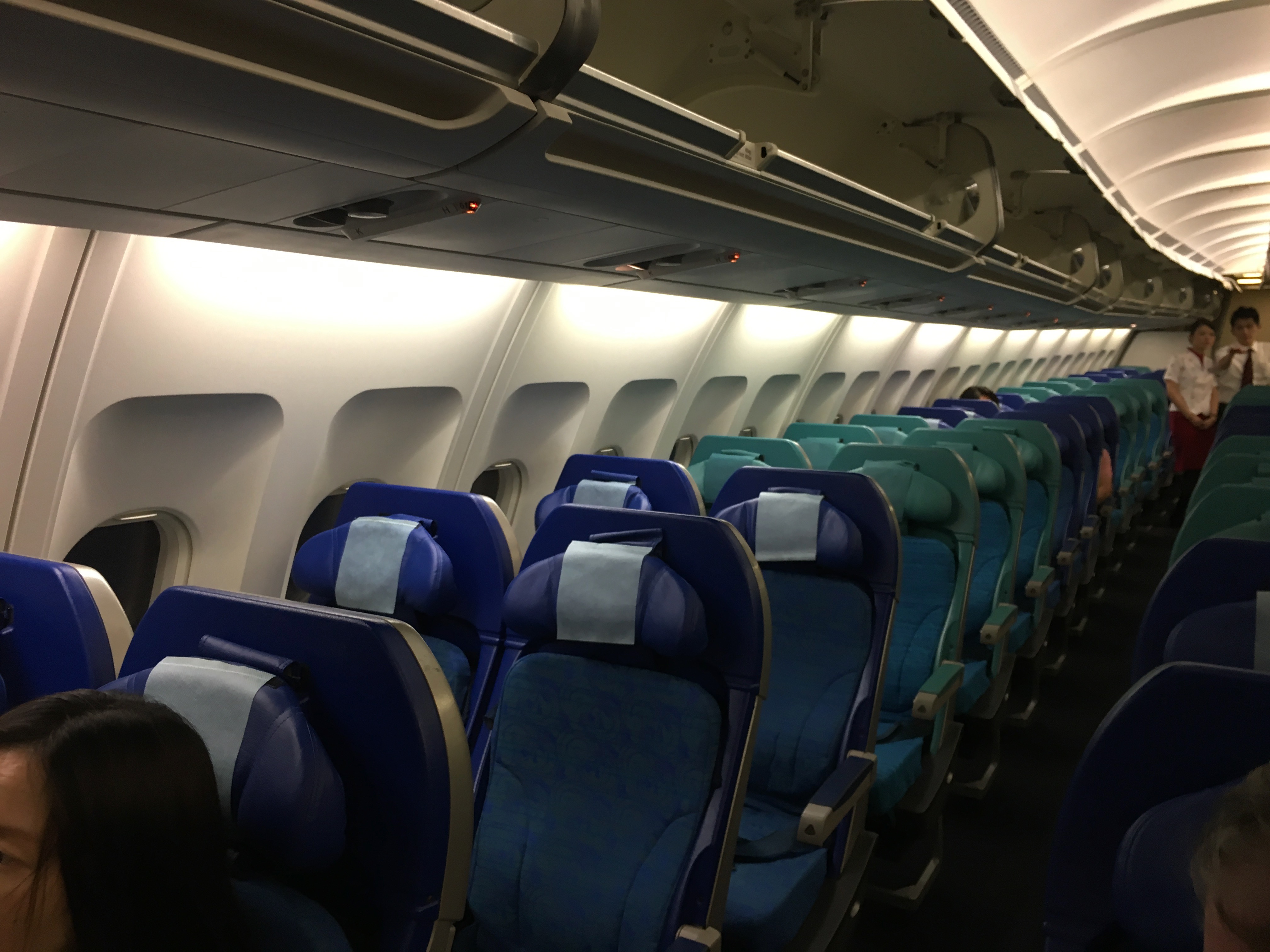 The earning rates for regional Economy flights are generally very generous
The earning rates for regional Economy flights are generally very generous
“Secret” Benefits?
While Cathay Pacific generally does a pretty good job when it comes to publishing the benefits that you would get as a Marco Polo Club members, there are a few secret or “soft” benefits that aren’t published.
One notable “secret” benefit is priority security, which isn’t mentioned likely because it is not offered at Cathay Pacific’s main hub. However, whenever offered, Gold and Diamond members are entitled to use priority security and immigration channels.
Another notable “soft” benefit is that Gold and Diamond members tend to be given some form of personal greeting when onboard. In my experience as a Gold member, I’ve mostly been welcomed by the flight purser when flying in Economy and Premium Economy. However, I find that these personal greetings are quite rare in Business Class. The level of the personal greetings will also vary. Meanwhile, Diamond members are consistently personally welcomed by flight attendants and the in-flight services manager when travelling in all classes. Some flight attendants will also address Gold and Diamond members travelling in Economy by name during the meal service, which is a nice touch.
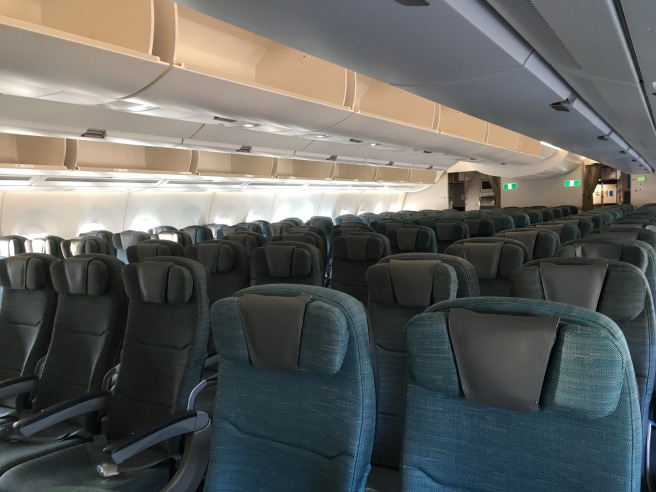 Gold and Diamond members travelling in Economy will typically be greeted by the crew
Gold and Diamond members travelling in Economy will typically be greeted by the crew
Occasionally, some flight attendants will ask Gold and Diamond members for their preferred meal choice, while other flight attendants tend to serve Gold and Diamond members before other passengers. I’m sure there is a formalised policy when it comes to this, but I’ve found flight attendants to be all over the place throughout my travels, which is surprising given how much Cathay prides itself on being a “consistent” airline.
Diamond members also get a few more “secret” benefits. They can sometimes request to have the seat next to them blocked which will ensure that the seat is one of the last to be assigned. This means that any empty seat on the flight is guaranteed to be next to the Diamond member. At Hong Kong Airport, Diamond members departing from any of the “further” gates are given a complimentary voucher for a concierge golf buggy ride to the lounge or to their gate.
What About Free Upgrades?
Cathay Pacific does not give space-available complimentary upgrades to elite members, and instead only operationally upgrades passengers. This means that passengers only ever really get upgrades when a flight is overbooked and passengers need to be bumped. However, there are exceptions to this rule. For example, on special occasions such as birthdays or membership anniversaries, or hitting mileage milestones (1 million miles) members may be given a complimentary upgrade to a higher cabin class. At the very least, you’ll jump to the front of the upgrade queue. Unfortunately, Cathay Pacific can be very inconsistent when it comes to proactively offering these types of upgrades.
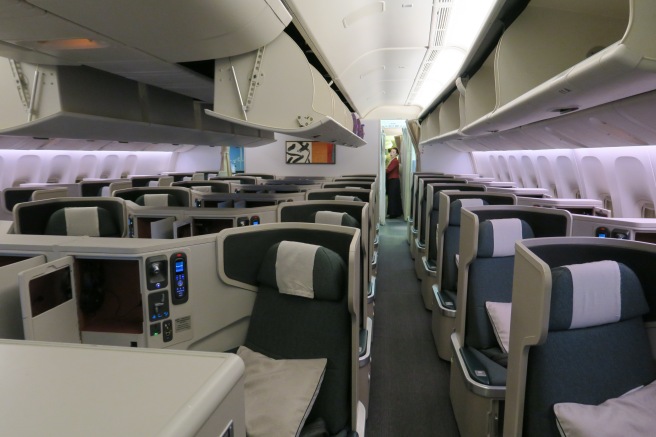 Cathay Pacific Boeing 777-300ER Business Class
Cathay Pacific Boeing 777-300ER Business Class
While this means that upgrades are generally rarer than you’d find on other carriers, they still tend to happen quite often, especially on shorter regional routes or flights during the peak travel season. Therefore, Cathay has a formalised upgrade “order” for passengers, which is believed to be as follows (which you can find on Flyertalk).
- VIP Customers (high-ranking officials, pop or movie stars)
- Diamond Plus
- Diamond Invitation, Diamond
- Gold
- Cathay Pacific Management staff travelling for work
- oneworld Emerald
- Cathay Pacific staff on work-related travel , other airline staff and Cahtay Pacific staff on personal travel
- oneworld Sapphire
- Silver
- oneworld Ruby
- Green
- Asia Miles
- All other passengers
Upgrades can happen both before a flight and at the airport. I’ve been upgraded as early as 24 hours before departure and as late as boarding. Upgraded passengers may board with their class of travel, but generally, don’t receive benefits such as lounge access (when applicable). If two “equally qualified” members are going for an upgrade, the passenger who checked in earlier (which means having a lower boarding number) will receive the upgrade, so it’s important to always check-in online early to maximise your chances.
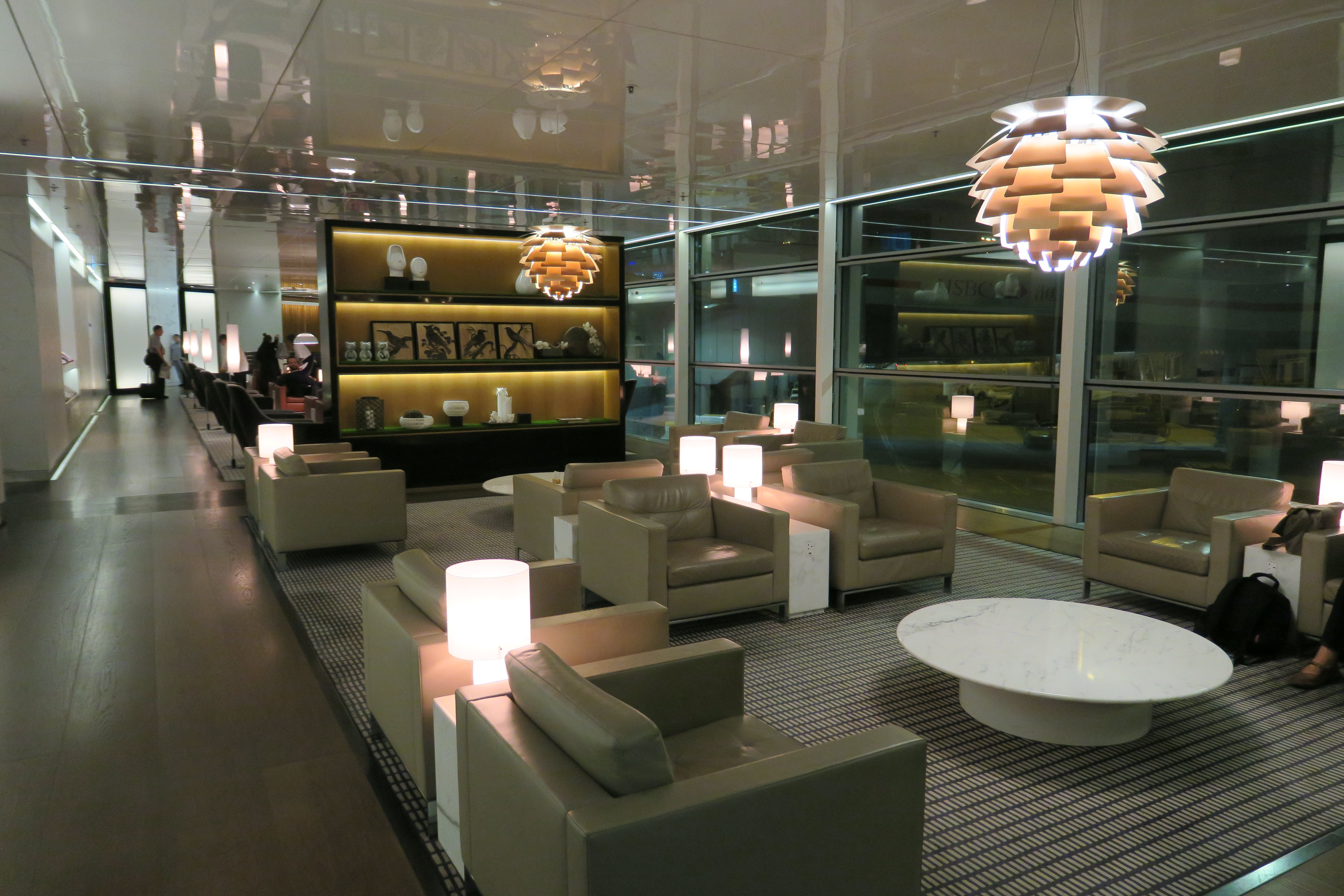 Green/Asia Miles Members upgraded to Business Class won’t receive lounge access
Green/Asia Miles Members upgraded to Business Class won’t receive lounge access
For more information about upgrades, check out this really helpful thread from Flyertalk which should answer any unanswered questions about upgrades.
Should you join the Marco Polo Club?
Of course, this really depends on who you are and your own travel patterns.
Personally, I joined the Marco Polo Club because I knew I was going to be flying a significant amount of flights to New York, mostly booked in Economy and Premium Economy, all of which with Cathay Pacific. Despite Cathay’s dismal earning rates for those ultra long-haul flights in Economy and Premium Economy, I thought at the time that it would make the most sense for me to go for status with Cathay given how much I was going to be flying with them. While I wouldn’t necessarily say that I regret that decision, I wish that I had analysed the different programs within the oneworld alliance and chosen a program with better earning rates for my flights and easier access mid-tier or even top-tier oneworld status.
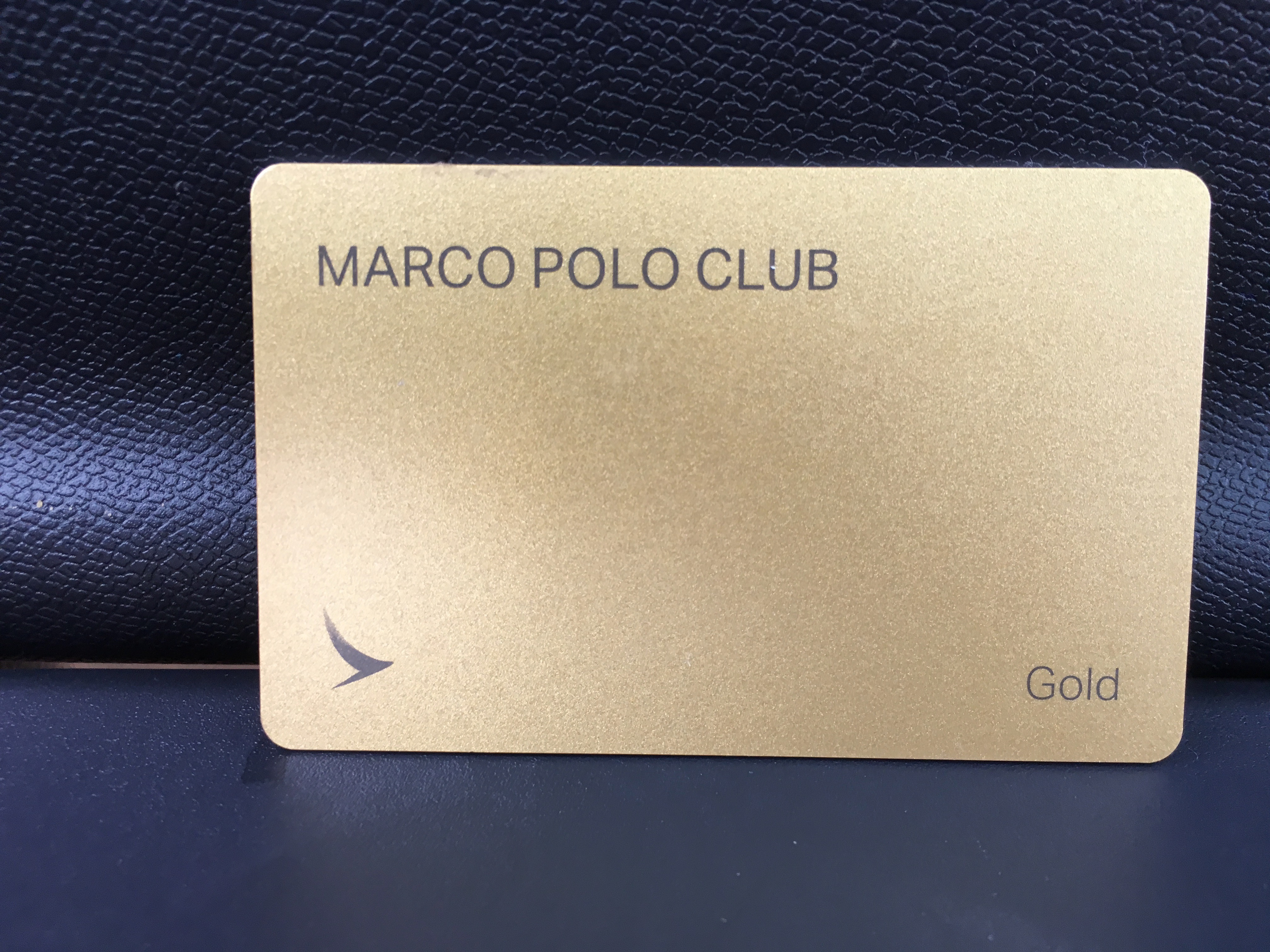 My Marco Polo Gold Card (which I totally didn’t pull out of my wallet and stage a photo shoot while in a moving car because I was running out of pictures)
My Marco Polo Gold Card (which I totally didn’t pull out of my wallet and stage a photo shoot while in a moving car because I was running out of pictures)
As a general rule of thumb, I would recommend corporate flyers (so, paid for by the company) with a significant amount of travel with Cathay Pacific and Cathay Dragon to join the program, given that most corporate travelers tend to either travel in either flexible Economy tickets or in Premium cabins, as these are the travelers that Cathay generally rewards when it comes to the program. In addition, I think that those who travel on Cathay regionally extensively regardless of cabin class generally win quite heavily as part of Cathay’s ongoing efforts to push back against low-cost or regional competitors. The program also provides substantial value for the average Hong Kong-based traveller with infrequent travels, given some of the valuable benefits that come with Green status.
Last Thoughts
Cathay Pacific’s Marco Polo Club program certainly isn’t as competitive or lucrative as it was in the past. However, it’s still a half decent program and has a lot going for it in terms of the benefits that customers receive, especially for certain demographics of travellers. I hope you’ve enjoyed reading this mammoth of a post and that you’ve learned something new about the program.
As a final note, if you still have any unanswered questions about the Marco Polo Club after reading this post, be sure to head over to Flyertalk which is a really fantastic resource for anyone looking to learn more about the program.